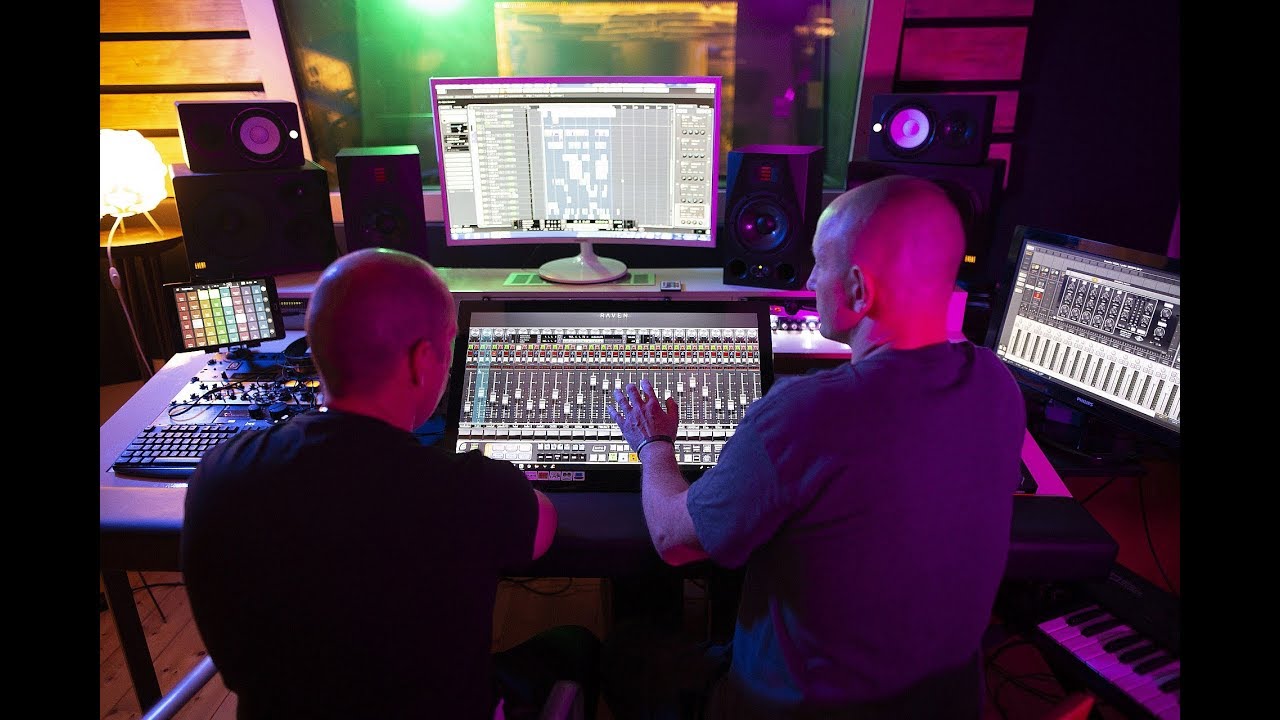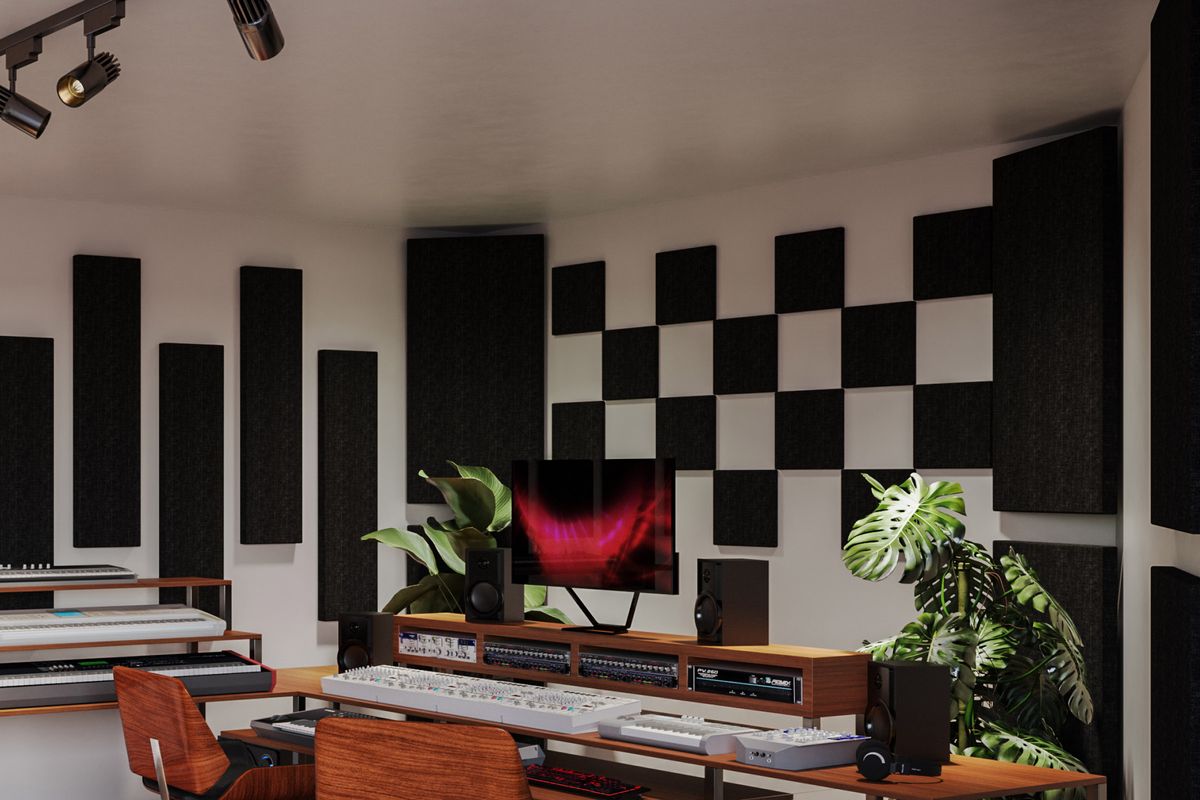Home>Production & Technology>Remix>How To Make A Trap Remix


Remix
How To Make A Trap Remix
Modified: February 19, 2024
Learn how to create a killer trap remix with our step-by-step guide. Unlock the secrets of remixing and master the art of transforming songs into jaw-dropping remixes.
(Many of the links in this article redirect to a specific reviewed product. Your purchase of these products through affiliate links helps to generate commission for AudioLover.com, at no extra cost. Learn more)
Table of Contents
- Introduction
- Choosing the Right Track
- Analyzing the Original Song
- Isolating the Elements
- Understanding Trap Remix Techniques
- Adding 808 Bass
- Layering Drums and Percussion
- Incorporating Trap-style Synth Melodies
- Creating Build-ups and Drops
- Enhancing with Vocal Samples
- Applying Effects and Mixing Techniques
- Finalizing the Trap Remix
- Conclusion
Introduction
Trap remixes have become increasingly popular in recent years, as they bring a fresh and edgy twist to well-known songs. This genre combines elements of hip-hop, electronic music, and EDM, resulting in powerful and energetic tracks that are perfect for parties and clubs.
If you’re a music producer or DJ looking to create your own trap remix, this article will guide you through the process. We’ll cover everything from choosing the right track to enhancing it with trap-style elements and effects. Whether you’re a seasoned remixer or just starting out, this article is packed with valuable tips and techniques to help you create an attention-grabbing trap remix.
Before we dive into the specifics, it’s important to note that remixing is an art form that requires creativity and respect for the original song. A successful trap remix should maintain the essence of the original while adding a unique trap flavor. It’s about finding the right balance between honoring the original artist’s vision and putting your own creative spin on it.
Now, let’s get started on our journey to make an exciting trap remix that will captivate listeners and make them dance to your beats.
Choosing the Right Track
The first step in creating a successful trap remix is selecting the right track to work with. The choice of the original song is crucial as it sets the foundation for your remix. Here are some key considerations when choosing a track:
- Popular and recognizable: Opt for a song that is well-known and loved by many. Remixing a popular track will not only attract a larger audience but also add an element of familiarity to your remix.
- Musical compatibility: Look for a song that aligns with the trap genre. The original track should have elements such as catchy melodies, strong vocals or instrumental hooks, and rhythm patterns that lend themselves well to trap remixing.
- Personal connection: Choose a song that resonates with you personally. When you have a genuine connection to the original track, it will fuel your creativity and passion throughout the remixing process.
- Versatility: Consider how adaptable the track is to different styles and genres. This will give you more creative freedom to experiment and incorporate trap elements effectively.
Remember, remixing should be about adding your own unique touch to the original song while maintaining its essence. Don’t be afraid to think outside the box and choose a track that might not be an obvious choice for a trap remix. Sometimes, the most unexpected combinations can result in the most captivating and memorable remixes.
Once you’ve identified the perfect track, it’s time to move on to the next step: analyzing the original song to understand its structure and key elements.
Analyzing the Original Song
Before diving into the remixing process, it’s essential to thoroughly analyze the original song. This analysis will help you understand the structure, arrangement, and key elements that make the track unique. Here’s how to approach it:
- Song structure: Break down the original song into its various sections, such as intro, verse, chorus, bridge, and outro. Pay close attention to the transitions between these sections.
- Key elements: Identify the core elements of the song, such as the main melody, vocals, chords, and percussion. Make note of any standout moments or hooks that you want to retain or enhance in your remix.
- Tempo and key: Determine the original song’s tempo and key. This information will help you align your remix elements appropriately and ensure they complement the original track.
- Emotional tone: Consider the overall mood and vibe of the original song. Is it upbeat and energetic, or more laid-back and mellow? Understanding the emotional tone will guide your decisions when adding trap elements.
- Instrumentation: Take note of the instruments used in the original song. This will help you identify potential areas for instrumental variation and experimentation in your remix.
By thoroughly analyzing the original song, you gain a deeper understanding of its structure and essence. It allows you to identify the key elements that make the track appealing to listeners and help guide your remixing decisions. Remember, a successful trap remix should maintain the core elements that resonate with the audience while infusing your own creative twist.
Once you have analyzed the original song, the next step is to isolate and extract the elements that you want to focus on in your remix.
Isolating the Elements
After analyzing the original song, it’s time to isolate and extract the key elements that you want to feature in your trap remix. This process involves breaking down the track to its individual components, allowing you to manipulate and recontextualize them in your remix. Here’s how to go about isolating the elements:
- Melody and vocals: Identify the main melody and vocals in the original song. These elements are often the most recognizable and memorable parts. Decide whether you want to keep them intact or incorporate them in a modified form in your remix.
- Chords and progressions: Pay attention to the chord progressions and harmonic structure of the original song. These elements contribute to the overall mood and atmosphere. Determine if you want to retain the original chords or experiment with new ones that align with the trap genre.
- Percussion and drums: Analyze the percussion and drum patterns in the original track. These elements provide the rhythmic foundation. Decide if you want to enhance and add more intricate trap-style drum patterns or maintain a similar groove.
- Instrumentation: Take note of any unique or distinctive instrument sounds used in the original song. Decide whether you want to incorporate them as-is or replace them with trap-style synths or samples.
- Effects and transitions: Pay attention to the effects, transitions, and production techniques used in the original song. Consider if you want to incorporate similar effects or experiment with new ones to add a fresh and unique touch to your remix.
By isolating and extracting the essential elements, you have a foundation to work with in your trap remix. Aim to maintain the core elements that make the original song stand out while infusing them with your own creative ideas and trap-style elements. Remember, the goal is to create a fresh and exciting rendition of the original song that will captivate your audience.
Once you have isolated the elements, it’s time to delve into the techniques specific to creating a trap remix. We’ll explore these techniques in the following sections, starting with adding 808 bass, a staple of trap music.
Understanding Trap Remix Techniques
Creating a trap remix involves applying specific techniques that are characteristic of the trap genre. These techniques allow you to infuse your remix with the distinct energy and style that defines trap music. Here are some essential trap remix techniques to keep in mind:
- Heavy 808 bass: Trap music is known for its deep and powerful 808 basslines. Add a prominent 808 bass sound to your remix to create a strong foundation and drive the energy of the track.
- Layered drums and percussion: Experiment with layering drums and percussion to create complex and impactful rhythms. Use hard-hitting kicks, snappy snares, and unique percussion sounds to add intensity and drive to your remix.
- Trap-style synth melodies: Incorporate trap-style synth melodies to add catchy hooks and memorable elements to your remix. Experiment with different synth sounds and chord progressions to create unique and infectious melodies.
- Build-ups and drops: Use build-ups and drops to create tension and release in your trap remix. Build-ups gradually increase the energy and intensity, leading to a climactic drop that unleashes the full power of the track.
- Vocal samples: Integrate vocal samples, chops, or effects to add an extra layer of interest and variation to your remix. Play around with pitching and manipulating the vocals to create unique textures and dynamic elements.
- Effects and mixing techniques: Apply various effects and mixing techniques to enhance the overall sound of your remix. Use reverb, delay, and compression to add depth and cohesion to the different elements. Experiment with automation to create interest and movement.
Understand that these techniques are not strict rules but rather guidelines to help you achieve the desired trap sound in your remix. Feel free to experiment and add your own creative touch to make your remix stand out.
Now that we’ve covered the essential trap remix techniques, let’s explore each of them in more depth, starting with adding the crucial 808 bass to your track.
Adding 808 Bass
One of the defining elements of trap music is the deep and powerful 808 bass. Adding this signature sound to your remix is crucial to capturing the essence of the genre. Here’s how you can incorporate 808 bass in your trap remix:
1. Choose the Right 808 Sound:
Start by selecting a high-quality 808 bass sample or synthesizer preset. Look for a sound that has a deep and resonant tone, with a sustain that can be manipulated to create long, sustained notes.
2. Set the Key and Tune the 808:
Make sure the 808 bass is properly tuned to the key of your remix. Adjust the pitch of the 808 sample or the oscillator of the synthesizer to match the key of the original song or the desired musical progression. This ensures that the bass line blends harmoniously with the other elements in your remix.
3. Design the Bass Line:
Create a catchy and rhythmic bass line using the 808 sound. Experiment with different patterns and note placements to find a groove that complements the original song and adds a unique flavor to your remix. Pay attention to the rhythm and timing to ensure that the bass line sits well with the drums and other elements in the track.
4. Add Variations and Transitions:
To keep the bass line interesting and dynamic, introduce variations and transitions throughout your remix. This can include adding slides, pitch bends, or rhythm variations to add movement and excitement to the bass line. Use automation or MIDI control to modulate parameters such as filter cutoff, resonance, or decay to create texture and variation in the bass sound.
5. Mix and Blend the Bass:
Ensure that the 808 bass sits well in the mix and complements the other elements of your remix. Use equalization to shape the frequency response of the bass, cutting any muddiness or unwanted frequencies. Consider side-chain compression to create space for the kick drum and allow it to cut through the mix. Experiment with different effects, such as distortion, saturation, or modulation, to add character and depth to the bass sound.
Adding 808 bass in your trap remix will provide the foundation and low-end presence that is synonymous with the genre. The punch and weight of the bass will greatly contribute to the energy and impact of your track.
Next, let’s move on to the crucial aspect of layering drums and percussion in your trap remix.
Layering Drums and Percussion
In trap remixes, the drums and percussion play a vital role in driving the energy and creating a dynamic rhythm. Layering different drum sounds and percussion elements will add depth and complexity to your track. Here’s how you can effectively layer drums and percussion in your trap remix:
1. Choose Your Drum Sounds:
Select a variety of drum sounds that work well in the trap genre. This includes hard-hitting kicks, snappy snares, tight hi-hats, and impactful percussion samples. Look for samples with strong transients and a good balance between the attack and sustain phases.
2. Assign Roles to Each Drum Sound:
Assign specific roles to each drum sound in your mix. The kick drum provides the foundation and a powerful low-end punch, while the snare adds impact and serves as a focal point in the rhythm. The hi-hats and other percussion samples fill in the gaps, adding texture and groove to the beat.
3. Layering the Kick Drum:
Layering multiple kick drum samples can provide a fuller and more well-rounded sound. Combine samples with different characteristics, such as ones with a solid low-end presence and others with a clicky attack. Experiment with layering and blending until you achieve a kick drum sound that cuts through the mix and complements the bassline.
4. Enhancing the Snare:
Layering multiple snare samples helps to create a snappier and more impactful sound. Combine samples with different tonal qualities and characteristics, such as ones with a tight and sharp attack or a more resonant and reverberant tail. Adjust the levels and blend the layers to achieve the desired snare sound that cuts through the mix and adds excitement to your remix.
5. Adding Hi-Hats and Percussion:
Use a variety of hi-hat and percussion samples to add rhythm and texture to your beat. Experiment with different patterns, velocities, and rhythms to create interesting and complex rhythms. Layer different hi-hat sounds to add variety and movement to the beat. Consider adding additional percussion elements, such as shakers, tambourines, or claps, to enhance the groove and fill in the spaces between the kicks and snares.
6. Processing and Mixing:
Process and mix your drum and percussion elements to ensure a cohesive and balanced sound. Use EQ to shape the frequency response of each element, cutting any unwanted frequencies or resonances. Apply compression to add punch and control dynamics. Consider adding subtle saturation or distortion to add character and warmth. Apply reverb and delay effects to create space and dimension. Be mindful of the overall balance and ensure that the drums and percussion sit well in the mix without overpowering other elements.
Layering drums and percussion in your trap remix will give your track a powerful and dynamic rhythm. The combination of different drum sounds and percussion elements will add depth, excitement, and groove to your remix.
Next, let’s explore incorporating trap-style synth melodies into your remix.
Incorporating Trap-style Synth Melodies
When it comes to creating a trap remix, incorporating catchy and memorable synth melodies is essential. These melodies add the melodic hooks that will grab the listener’s attention and make your remix stand out. Here’s how you can effectively incorporate trap-style synth melodies into your remix:
1. Select the Right Synth Sounds:
Choose synth sounds that are commonly used in trap music, such as heavy, detuned leads, plucked or arpeggiated sounds, or atmospheric pads. Experiment with different presets or create your own unique sounds using synthesizers. Aim for sounds that have a rich and full texture with a powerful presence.
2. Design Melodies to Complement the Original Song:
Create melodic ideas that complement and enhance the original song. Consider the key and tonalities used in the original track, and craft melodies that blend well with the existing elements. Take into account the emotional tone of the song and aim to evoke the same vibes in your remix while adding your own creative twist.
3. Experiment with Different Chord Progressions:
Explore various chord progressions that fit the mood and style of the original song. Trap remixes often include minor chord progressions with a moody or dark atmosphere. However, don’t be afraid to experiment with different progressions and inversions to add complexity and interest.
4. Layer and Stack Melodies:
Create layers of melodies to add depth and complexity to your remix. Experiment with harmonization, octave doubling, or creating countermelodies that interact with the main melody. This will help to create a fuller and more interesting sound for your remix.
5. Add Trap-style Rhythmic Elements:
Incorporate trap-style rhythmic elements into your melodies, such as rapid-fire 16th note patterns or syncopated rhythms. This will add the characteristic bounce and groove of trap music to your remix. Experiment with different rhythms and note placements to find the right balance between catchiness and complexity.
6. Use Effects and Processing:
Apply effects and processing techniques to make your synth melodies stand out. Consider using reverb, delay, and modulation effects to add space and movement to the sound. Apply subtle amounts of saturation or distortion to add warmth and character. Use automation to create variations in the sound and add interest to your melodies.
Remember, the goal is to create unique and memorable synth melodies that complement the original song while infusing your trap remix with an infectious and captivating quality.
Next, let’s explore the techniques for creating build-ups and drops in your trap remix.
Creating Build-ups and Drops
In trap music, build-ups and drops are essential elements that add excitement, tension, and release to your remix. These sections create a sense of anticipation and intensify the energy of the track. Here’s how you can create effective build-ups and drops in your trap remix:
1. Building Tension in the Build-up:
Start the build-up section by gradually introducing new elements and intensifying the energy. Begin with a simple and stripped-down arrangement, and gradually add layers of percussion, synths, and effects. Increase the intensity and complexity of the rhythms and melodies as the build-up progresses. Utilize risers, sweeps, and other sound effects to create tension and anticipation.
2. Establish the Drop:
Before the drop, create a short pause or a moment of silence to heighten the impact. This brief silence prepares the listener for the explosive upcoming drop. Consider using a vocal sample, a reversed cymbal, or a snare roll to signal the imminent drop and increase anticipation.
3. Power and Impact in the Drop:
The drop section is where the energy peaks and the bass hits hard. Introduce the 808 bass and the main elements of your track in a powerful and impactful manner. Utilize intense drum patterns, energetic synth melodies, and catchy vocal chops to create a sense of exhilaration and drive. Experiment with variations in the rhythm and unexpected surprises to keep the drop fresh and exciting.
4. Utilizing Fills and Drum Rolls:
Fills and drum rolls are effective techniques to add energy and transition between different sections of your remix. Use snare rolls or tom fills to build anticipation leading into the drop, and use fill samples or effects to fill in the gaps during transitions. These elements create momentum and add excitement to the overall arrangement.
5. Dynamic Changes and Variation:
Create dynamic changes and variations within your build-ups and drops. Experiment with volume automation, filter sweeps, and modulation to add movement and interest to the elements. Use different rhythmic and melodic variations to create contrast and keep the listener engaged.
Remember, the build-ups and drops are the climactic moments in your remix. They should be carefully crafted to create anticipation and deliver a powerful punch. Don’t be afraid to experiment and add your own unique twists to make the build-ups and drops in your trap remix truly stand out.
Next, let’s explore how to enhance your remix with vocal samples.
Enhancing with Vocal Samples
Vocal samples can add a unique and captivating element to your trap remix. They inject personality and enhance the overall impact of your track. Here’s how you can effectively incorporate vocal samples into your remix:
1. Selecting Vocal Samples:
Choose vocal samples that complement the mood and style of your remix. Look for acapella tracks, vocal chops, or spoken word samples that fit well with the original song. Consider the tone, emotion, and energy of the vocals to ensure they align with the overall vibe of your remix.
2. Chopping and Manipulating Vocals:
Experiment with chopping and manipulating the vocal samples to create unique and interesting variations. Slice the vocals into smaller segments and rearrange them to create new phrases or melodies. Experiment with pitching, time-stretching, and granular synthesis to create unique textures and effects.
3. Creating Hooks and Adlibs:
Use vocal samples to create catchy hooks or adlibs that add an extra layer of interest and catchiness to your remix. These hooks can be repeated throughout the track to create a sense of familiarity and memorability.
4. Applying Effects and Processing:
Add effects and processing to the vocal samples to enhance their impact and fit them into the mix. Apply EQ to shape the frequency response and remove any unwanted resonances. Add reverb or delay to create a sense of space and depth. Use compression to control the dynamics and ensure the vocals sit well in the mix.
5. Layering with the Original Vocals:
If possible, consider layering your newly created vocal samples with the original vocals from the original track. This can add depth and richness to the vocal section of your remix. Experiment with different volume levels and panning to ensure a cohesive blend of the vocals.
6. Experimenting with Vocal Effects:
Don’t be afraid to experiment with vocal effects to create unique and atmospheric textures. Apply creative effects such as vocoders, stutter effects, or formant shifting to add interesting and otherworldly elements to your vocal samples.
Vocal samples can be a powerful tool to elevate your trap remix. They can add emotional depth, catchiness, and a human element to your track. Choose vocal samples that resonate with your remix concept and experiment with creative techniques to make them stand out.
Next, let’s explore the importance of applying effects and mixing techniques in your trap remix.
Applying Effects and Mixing Techniques
Applying effects and employing proper mixing techniques are key aspects of creating a professional-sounding trap remix. These techniques will help enhance the overall sound, balance the different elements, and create a cohesive and impactful mix. Here’s how you can apply effects and implement effective mixing techniques:
1. Equalization (EQ):
Use EQ to shape the frequency response of each element in your remix. Cut any unnecessary low-end frequencies from non-bass elements to prevent muddiness. Boost or cut specific frequencies to make each element sit well in the mix and create a balanced sound.
2. Compression:
Apply compression to control the dynamics of different elements in your remix. Use it to even out the levels, add sustain, and enhance the impact of drums and percussion. Be careful not to over-compress, as it can result in a loss of dynamics and a flat-sounding mix.
3. Reverb and Delay:
Add reverb and delay effects to create depth and space in your remix. Use reverb to create a sense of ambience and place elements in a virtual space. Employ delay to add dimension, create echoes, and enhance the rhythmic feel of certain elements.
4. Panning and Stereo Imaging:
Experiment with panning to create a stereo image and place elements in different positions within the mix. This helps create a sense of width and separation. Use stereo imaging techniques, such as stereo widening or stereo enhancers, to enhance the stereo width of certain elements without compromising mono compatibility.
5. Automation:
Utilize automation to add movement, variation, and dynamic changes to your remix. Automate parameters such as volume, panning, filter cutoff, or effect settings to create interest and enhance specific sections of your track. Experiment with creative automation techniques to make certain elements stand out or blend in seamlessly.
6. Mixing for Clarity and Balance:
Aim for a balanced mix where each element can be heard clearly and no part overpowers the others. Pay attention to the relationships between different elements, ensuring that they work together harmoniously. Continuously reference your mix on various playback systems to ensure it translates well across different environments.
Applying effects and implementing proper mixing techniques will enhance the overall quality and impact of your trap remix. Remember to trust your ears and continuously make adjustments until you achieve a polished and well-balanced sound.
Finally, let’s move on to the last section: finalizing the trap remix.
Finalizing the Trap Remix
Finalizing your trap remix involves performing a thorough review and making any necessary adjustments to ensure a polished and professional end result. Here are some key steps to consider for the finalization process:
1. Arrangement and Structure:
Review the overall arrangement and structure of your remix. Ensure that the sections flow smoothly, transitions are seamless, and the energy builds up and releases as intended. Trim or extend sections if needed to optimize the impact of your remix.
2. Revisit the Mix:
Give your mix another careful listen and make any necessary adjustments. Listen for any imbalances in volume, frequencies, or stereo image. Make subtle EQ or compression tweaks to enhance the clarity and cohesiveness of the mix.
3. Mastering:
Consider applying subtle mastering techniques to ensure your remix sounds full, balanced, and competitive with other professional tracks. Use a mastering chain that includes EQ, compression, and limiting to enhance the overall volume and quality of your remix. Keep in mind that mastering is best done by a professional mastering engineer if you lack experience or the necessary equipment.
4. Quality Check:
Perform a quality check by listening to your final mix on different playback systems, such as headphones, studio monitors, and car speakers. This ensures that your remix translates well across various listening environments and helps you identify any final adjustments that may be needed.
5. Metadata and File Export:
Ensure that you have added appropriate metadata to your remix, including the artist name, track title, and any relevant additional information. Export your final remix in a high-quality format, such as WAV or high-bitrate MP3, with appropriate file naming conventions.
6. Promotion and Distribution:
Once your trap remix is finalized, it’s time to share it with the world. Consider uploading it to music streaming platforms, such as SoundCloud or YouTube, and promoting it through social media, playlists, and collaborations. Connect with DJs, producers, and bloggers to gain exposure and reach a wider audience.
Remember that finalizing a remix is an iterative process, and it’s always helpful to gather feedback from others you trust in the music community. Continuously refine and improve your remixing skills by learning from experience and experimenting with new techniques.
With these final steps, your trap remix is ready to make an impact and showcase your creativity and talent. Good luck, and enjoy the exciting journey of remixing!
Do you have any other questions or topics you’d like to explore?
Conclusion
Congratulations on completing your trap remix! Throughout this article, we’ve explored the various steps and techniques involved in creating a captivating and professional trap remix. From choosing the right track to analyzing the original song, isolating elements, incorporating trap-style elements, and applying effects and mixing techniques, you have gained valuable insights into the art of remixing in the trap genre.
Remember, creating a successful trap remix is about finding the perfect balance between honoring the original song and infusing it with your own creative ideas and trap-style elements. Pay attention to details, experiment, and trust your intuition to create a unique and exciting remix that will engage listeners and make them move to your beats.
As you continue your journey as a remixer, keep exploring new tracks, techniques, and sounds to expand your skills and find your signature style. Embrace the remixing process as a way to express your creativity and connect with an ever-growing audience who appreciates the fusion of familiar melodies with the infectious energy of trap music.
Lastly, don’t forget to share your remixes with the world. Promote your work, collaborate with other artists, and take advantage of various platforms to reach a wider audience. Keep refining your craft and learning from the feedback and experiences you gather along the way.
Now, armed with your newfound knowledge and expertise in creating trap remixes, go forth and unleash your creativity. Embrace the challenge, have fun, and enjoy the journey of remixing in the world of trap music!
If you have any further questions or need additional guidance, feel free to ask. Happy remixing!











